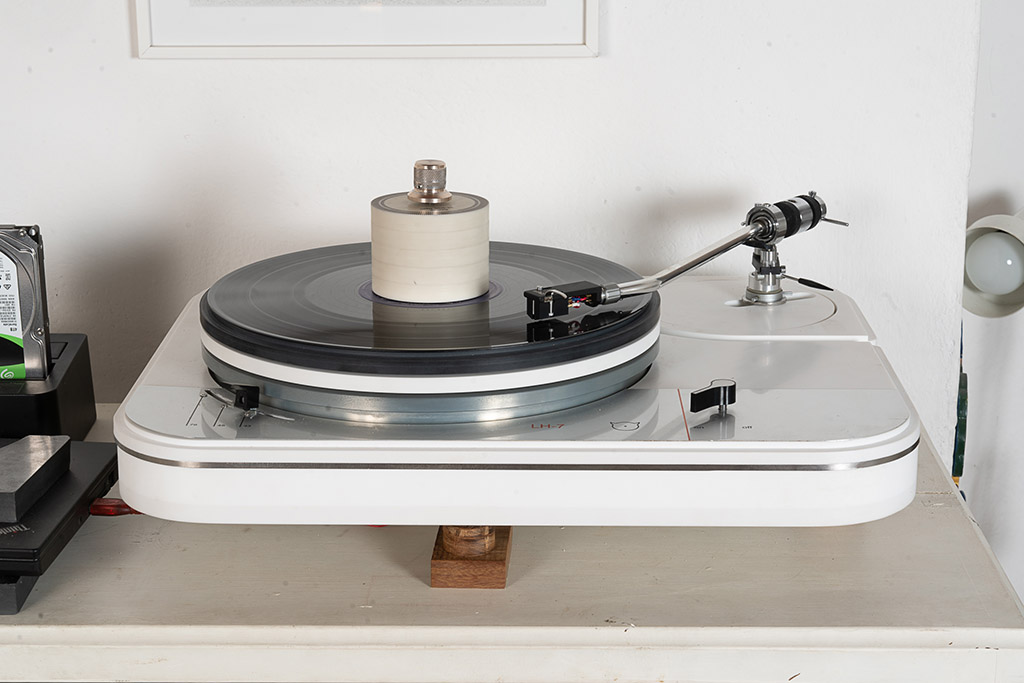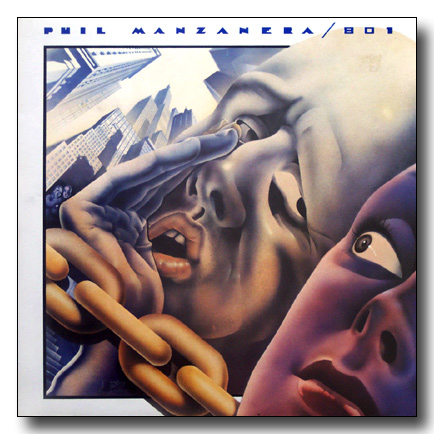
Shepard tone
From Wikipedia, the free encyclopedia
A Shepard tone, named after Roger Shepard, is a sound consisting of a superposition of sine waves separated by octaves. When played with the base pitch of the tone moving upwards or downwards, it is referred to as the Shepard scale. This creates the auditory illusion of a tone that continually ascends or descends in pitch, yet which ultimately seems to get no higher or lower.[1]
* 1 Construction of a Shepard scale
* 2 Shepard scales in music
* 3 References
* 4 External links
The acoustical illusion can be constructed by creating a series of overlapping ascending or descending scales. Similar to the Penrose stairs optical illusion (as in M. C. Escher's lithograph Ascending and Descending) or a barber's pole, the basic concept is shown in Figure 1.
Each square in the figure indicates a tone, any set of squares in vertical alignment together making one Shepard tone. The color of each square indicates the loudness of the note, with purple being the quietest and green the loudest. Overlapping notes that play at the same time are exactly one octave apart, and each scale fades in and fades out so that hearing the beginning or end of any given scale is impossible. As a conceptual example of an ascending Shepard scale, the first tone could be an almost inaudible C(4) (middle C) and a loud C(5) (an octave higher). The next would be a slightly louder C#(4) and a slightly quieter C#(5); the next would be a still louder D(4) and a still quieter D(5). The two frequencies would be equally loud at the middle of the octave (F#), and the eleventh tone would be a loud B(4) and an almost inaudible B(5) with the addition of an almost inaudible B(3). The twelfth tone would then be the same as the first, and the cycle could continue indefinitely. (In other words, each tone consists of ten sine waves with frequencies separated by octaves; the intensity of each is a gaussian function of its separation in semitones from a peak frequency, which in the above example would be B(4).)
The scale as described, with discrete steps between each tone, is known as the discrete Shepard scale. The illusion is more convincing if there is a short time between successive notes (staccato or marcato instead of legato or portamento). As a more concrete example, consider a brass trio consisting of a trumpet, a horn, and a tuba. They all start to play a repeating C scale (C–D–E–F–G–A–B–C) in their respective ranges, i.e. they all start playing Cs, but their notes are all in different octaves. When they reach the G of the scale, the trumpet drops down an octave, but the horn and tuba continue climbing. They're all still playing the same pitch class, but at different octaves. When they reach the B, the horn similarly drops down an octave, but the trumpet and tuba continue to climb, and when they get to what would be the second D of the scale, the tuba drops down to repeat the last seven notes of the scale. So no instrument ever exceeds an octave range, and essentially keeps playing the exact same seven notes over and over again. But because two of the instruments are always "covering" the one that drops down an octave, it seems that the scale never stops rising.
Jean-Claude Risset subsequently created a version of the scale where the steps between each tone are continuous, and it is appropriately called the continuous Risset scale or Shepard–Risset glissando. When done correctly, the tone appears to rise (or descend) continuously in pitch, yet return to its starting note. Risset has also created a similar effect with rhythm in which tempo seems to increase or decrease endlessly.[2]
Although it is difficult to recreate the illusion with acoustic institutes, James Tenney, who worked with Roger Shepard at Bell Labs in the early 1960s, has created a piece utilizing this effect, For Ann (rising). The piece, in which up to twelve closely but not quite consistently spaced computer-generated sine waves rise steadily from an A pitched below audibility to an A above, fading in, and back out, of audible volume, was then scored for twelve string players. The effect of the electronic work consists both of the Shepard scale, seamless endlessly (rising) glissandos, and of a shimmering caused by the highest perceivable frequency and the inability to focus on the multitude of rising tones. Tenney has also proposed that the piece be revised and realized so that all entrances are timed in such a way that the ratio between successive pitches is the golden ratio, which would make each lower first-order combination tone of each successive pair coincide with subsequently spaced, lower, tones.
An independently discovered version of the Shepard tone appears at the beginning and end of the 1976 album A Day At The Races by the band Queen. The piece consists of a number of electric-guitar parts following each other up a scale in harmony, with the notes at the top of the scale fading out as new ones fade in at the bottom. "Echoes", a 23-minute song by Pink Floyd, concludes with a rising Shepard tone. The Shepard tone is also featured in the fading piano outro to "A Last Straw", from Robert Wyatt's 1974 opus Rock Bottom.
In his book Gödel, Escher, Bach: An Eternal Golden Braid, Douglas Hofstadter explains how Shepard Scales can be used on the Canon a 2, per tonos in Bach's Musical Offering (called the Endlessly Rising Canon by Hofstadter[3]) for making the modulation end in the same pitch instead of an octave higher[4].
Another independent discovery, in classical music, occurs in the Fantasy and Fugue in G minor for organ, BWV 542, by Bach. Following the first third movement of the Fantasy there is a descending pedal bass line under a chord sequence which traverses the circle of fifths. The gradual addition of stops up to full organ sound creates something akin to a barber-pole pattern with an illusion of ever-deeper descent, even though the bass line actually skips octaves.
Chopin's Etude no. 3, op. 10 contains Shepard tone-like sequences in the middle section.
An example in modern culture of the Shepard tone is in the video game Super Mario 64; the tone accompanies the never-ending staircase.[5] However, this may not be a true Shepard tone, as the tone only takes on three note values within an octave and the transition to the third is not always perceived as being in the same direction.
Antonio Carlos Jobim's Waters of March has descending orchestration that is intended to represent the continual flow of water to the ocean; the effect is very much like Shepard tones.
A Shepard–Risset glissando can be found at the end of the Muse song "Ruled by Secrecy."
Songwriter Stephin Merritt makes use of a Shepard scale in his composition "A Man of a Million Faces," written for NPR Music's Project Song.[6][7]
Techno producers Christian Smith and John Selway used an ascending Shepard tone in their hit 2008 track "Total Departure", released on Drumcode Records. [8]
It can be heard at the end of the guitar solo of the song Oowatanite by the Canadian rock band April Wine. And at the end of Beck's 2002 song Lonesome Tears.
In the song "No Quarter" by the band Led Zeppelin, the Shepard Tone makes a brief appearance after the guitar solo.
It can be heard in some scenes in the 2004 movie The Forgotten (2004 film).
The Shepard Tone has also been used in the summer blockbuster The Dark Knight to give the Bat-Pod its transmissionless sound[9].
In the song "Elevator" by Ihsahn , (2008) It appears as the intro.
------------------
Intriguing!
.jpg)




























.jpg)







































No comments:
Post a Comment